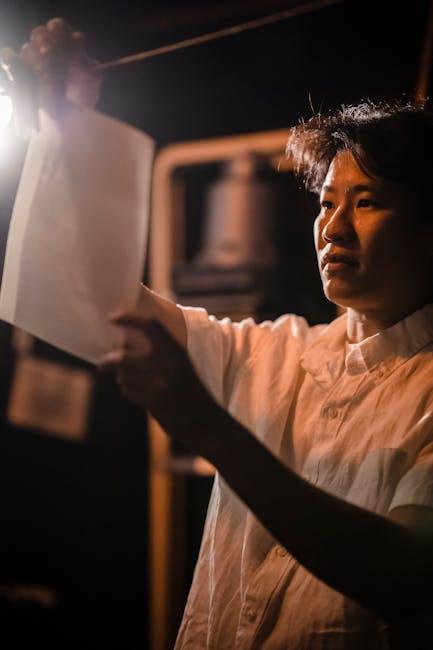In the world of cinema, where imagination meets reality, the journey from script to screen is a meticulous dance of creativity and technology. Every frame is a canvas, painted with precision to convey emotion, story, and vision. This article delves into the technical side of crafting a movie’s visual identity, exploring the intricate processes and cutting-edge techniques that transform written words into captivating visual experiences. Join us as we unravel the layers of cinematography, design, and digital wizardry that bring a filmmaker’s vision to life, turning the intangible into the unforgettable.
Crafting the Cinematic Vision: Storyboarding and Concept Art
Transforming a screenplay into a visual masterpiece requires the meticulous art of storyboarding and the imaginative prowess of concept art. Storyboarding acts as the blueprint of the film, providing a visual guide that translates written words into a sequence of images. It helps directors and cinematographers align their visions, ensuring that every shot contributes to the narrative flow. Concept art, on the other hand, delves into the aesthetic soul of the movie, shaping the look and feel of characters, environments, and props. This creative process breathes life into the script, offering a vivid glimpse into the film’s universe.
- Visual Storytelling: Storyboards break down scenes, illustrating camera angles, movements, and transitions.
- Creative Exploration: Concept art explores color palettes, lighting, and textures to establish the film’s mood.
- Collaborative Tool: Both mediums foster collaboration among directors, designers, and other departments.
By intertwining these artistic disciplines, filmmakers craft a cohesive visual identity that resonates with audiences, turning abstract ideas into tangible cinematic experiences.

Lighting the Scene: Techniques for Creating Mood and Atmosphere
In the realm of filmmaking, lighting transcends mere illumination; it is a powerful tool for evoking emotion and enhancing storytelling. Mastering the art of lighting involves understanding its profound impact on a scene’s mood and atmosphere. By manipulating light, filmmakers can guide the audience’s emotional journey, subtly influencing how they perceive each moment.
- Contrast and Shadows: Utilizing high contrast can create a sense of mystery or tension, while softer lighting may evoke warmth and intimacy.
- Color Temperature: Warm tones can suggest nostalgia or comfort, whereas cooler tones often evoke a sense of detachment or unease.
- Directional Lighting: Side lighting can add depth and drama, whereas front lighting often highlights clarity and innocence.
Each choice, from the angle of the light to its intensity, contributes to the narrative, turning a simple scene into a rich tapestry of visual storytelling. Through these techniques, directors and cinematographers craft a film’s unique visual identity, ensuring that every frame resonates with the intended emotional depth.

Camera Choices: Framing and Movement for Visual Impact
Choosing the right camera is pivotal in shaping a film’s visual narrative. The lens becomes a storyteller, guiding the audience’s gaze and emotions. Framing plays a crucial role in this storytelling. It determines what the viewer sees and how they interpret it. Wide shots can establish grandeur or isolation, while close-ups delve into intimacy and emotion. The choice of framing not only influences the mood but also aligns with the film’s thematic essence.
Camera movement further enriches the visual tapestry. It adds dynamism, drawing the viewer into the unfolding story. Consider the impact of a smooth tracking shot that immerses the audience in a character’s journey, or a handheld shot that conveys urgency and chaos. Here are some common techniques used by filmmakers:
- Pan: Sweeping across a scene to reveal context or transition smoothly.
- Tilt: Shifting the angle vertically to emphasize scale or follow action.
- Dolly: Moving towards or away from the subject for dramatic effect.
- Steadicam: Achieving fluid motion without the constraints of tracks.
By meticulously selecting and combining these elements, filmmakers craft a visual language that resonates with audiences, making the technical choices behind the camera as compelling as the story itself.
 Post-Production Magic: Color Grading and Visual Effects Integration”>
Post-Production Magic: Color Grading and Visual Effects Integration”>
Post-Production Magic: Color Grading and Visual Effects Integration
In the realm of post-production, color grading and visual effects integration transform raw footage into a cohesive visual masterpiece. The art of color grading involves adjusting the color balance, contrast, and saturation to evoke specific moods and enhance storytelling. It’s a delicate dance between science and art, where the colorist crafts a visual palette that aligns with the director’s vision.
Meanwhile, integrating visual effects requires seamless blending of CGI with live-action footage. This process ensures that the effects are not only believable but also serve the narrative. Key elements include:
- Seamless Compositing: Merging multiple elements to create a single, unified image.
- Dynamic Simulations: Crafting realistic movements and interactions within the scene.
- Attention to Detail: Ensuring every pixel aligns with the intended visual identity.
Together, these techniques elevate a film from mere footage to a cinematic experience, captivating audiences with every frame.

